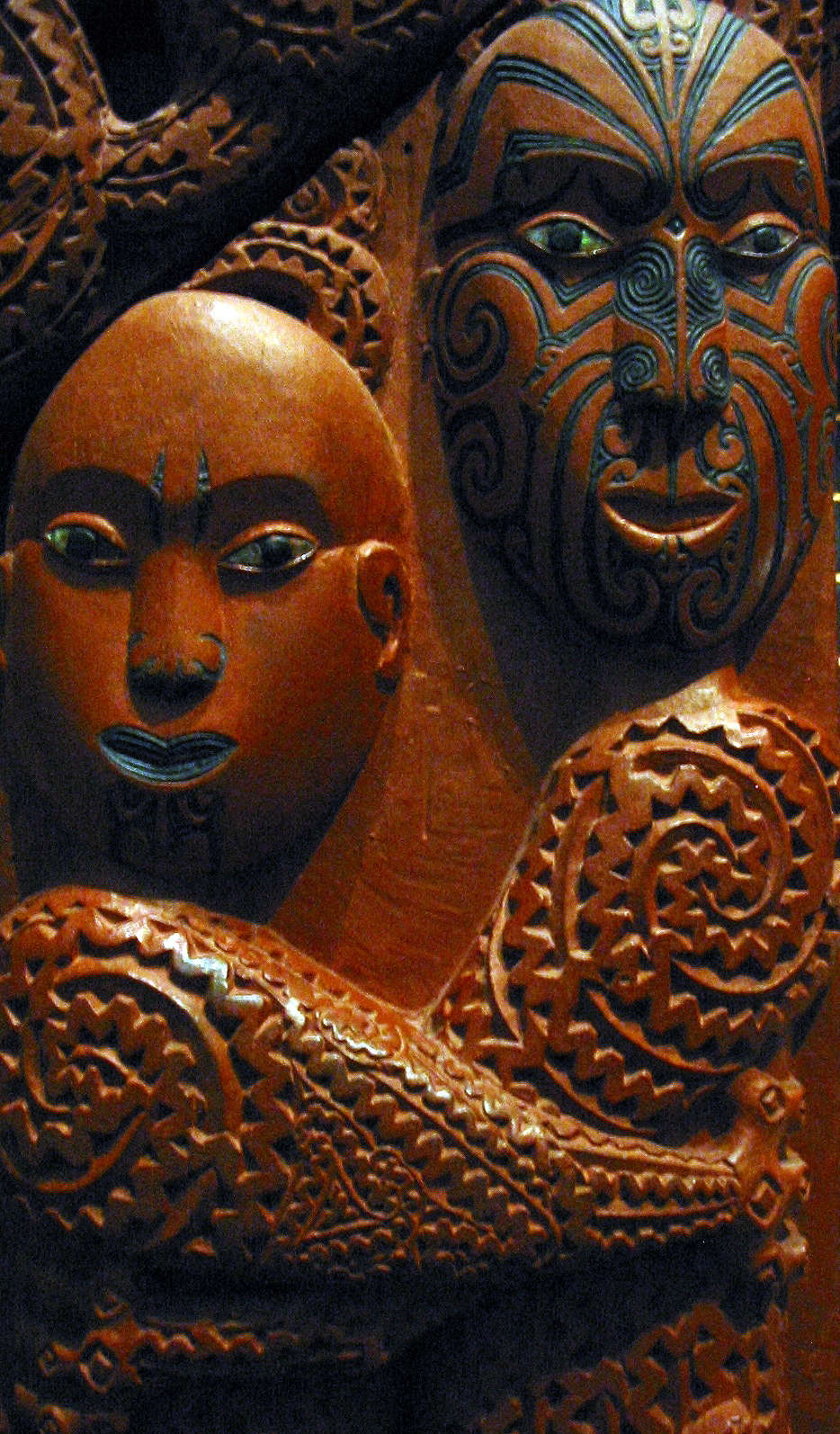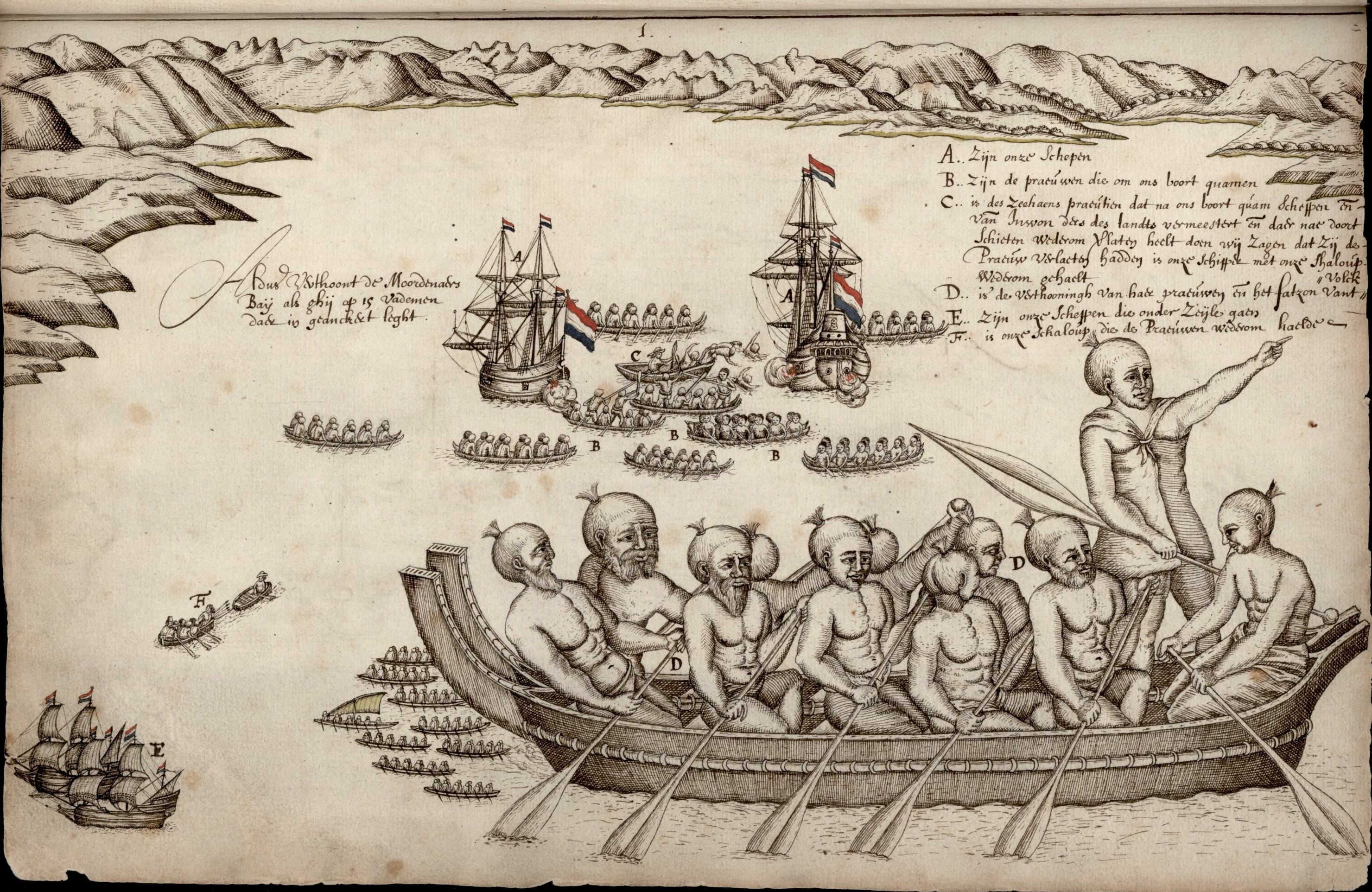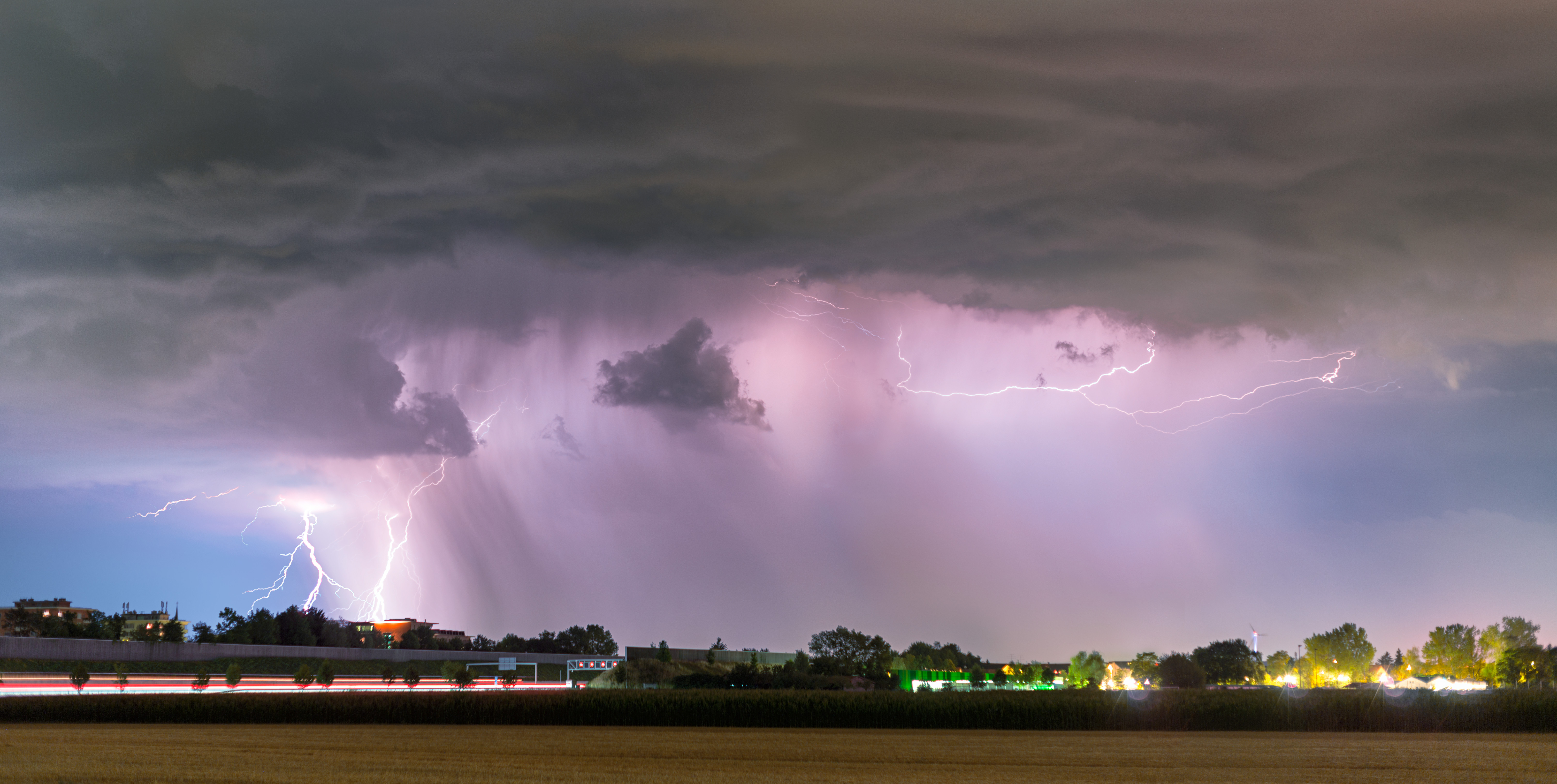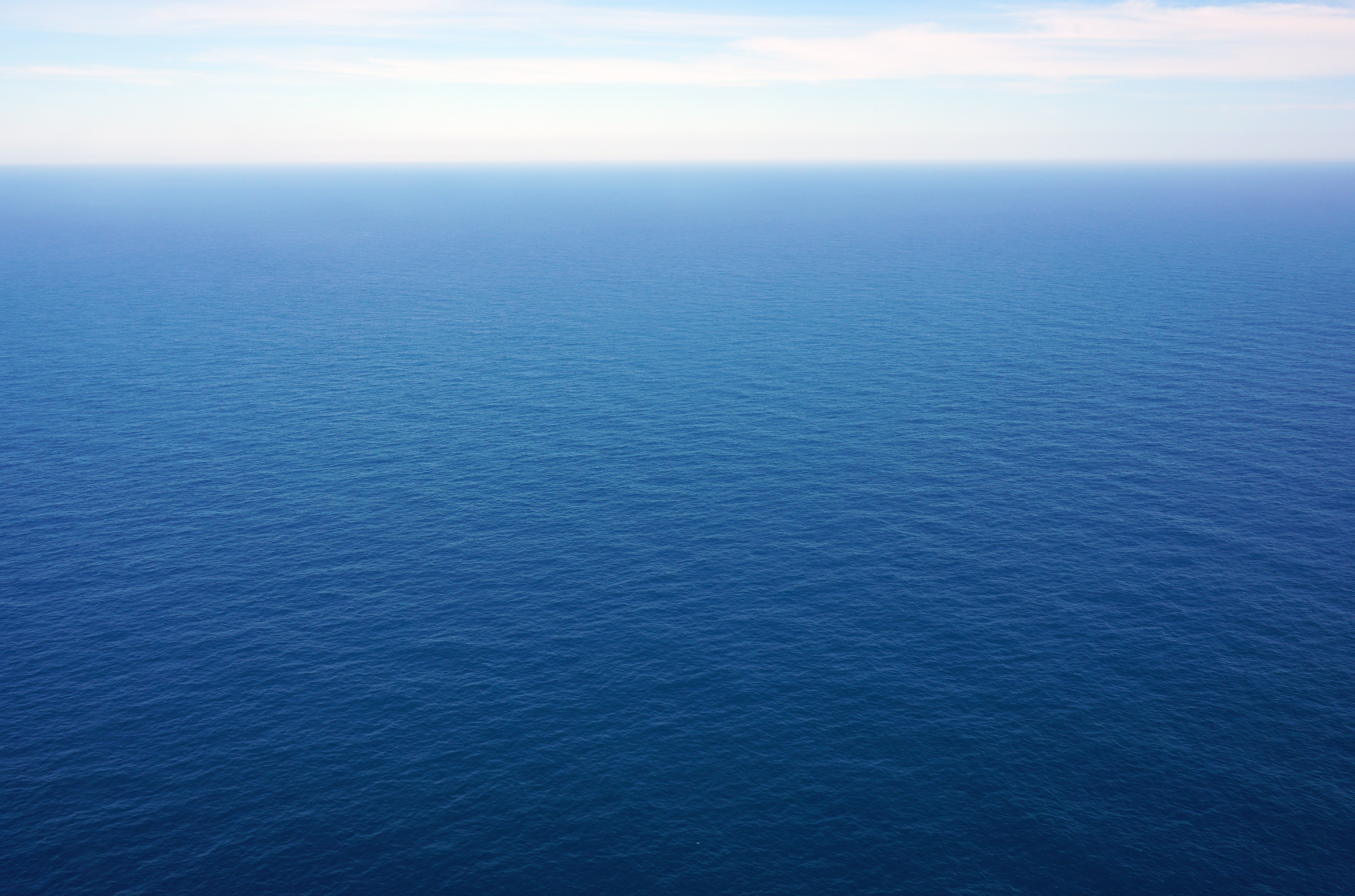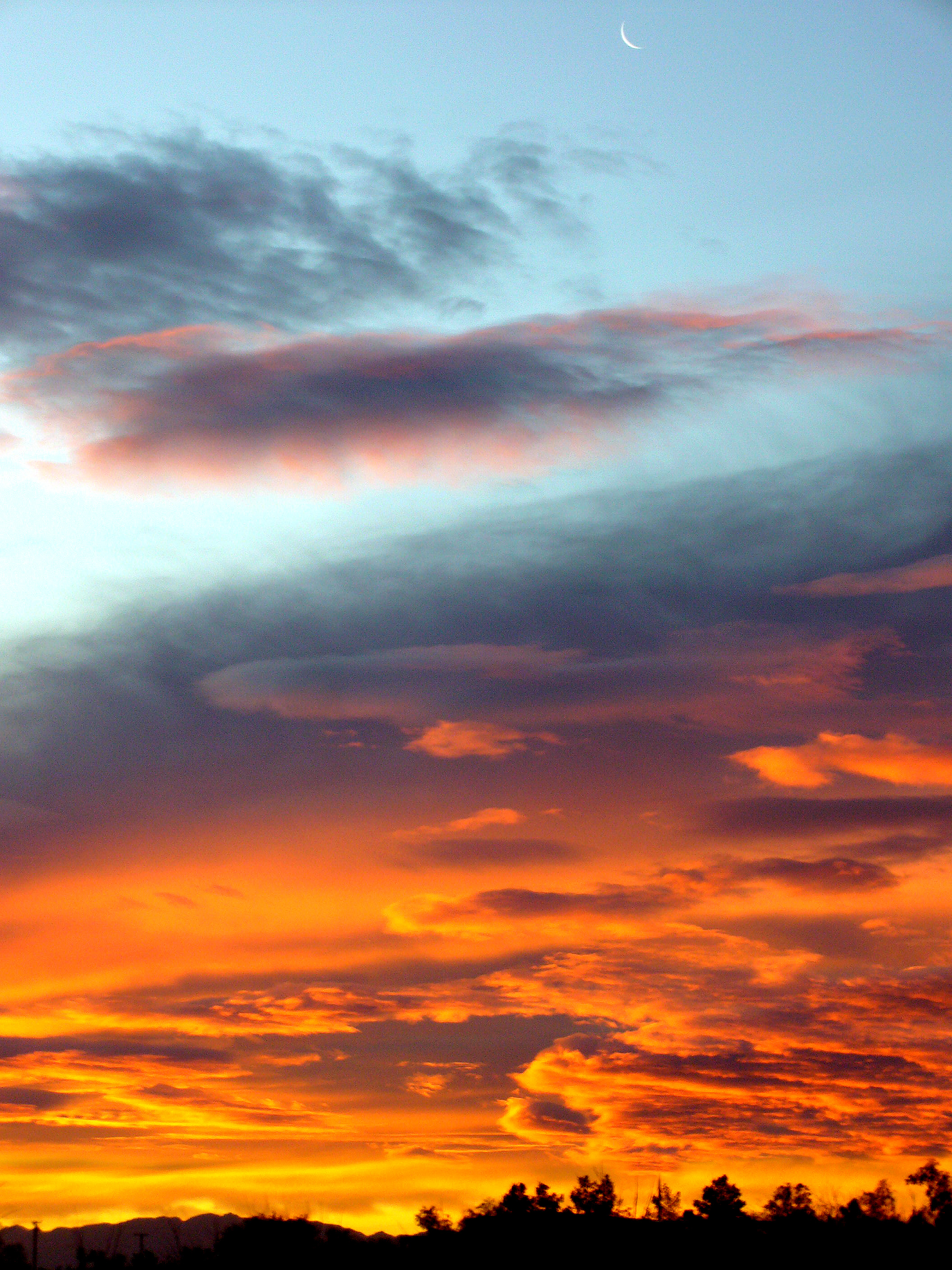|
Tāwhirimātea
In Māori mythology, Tāwhirimātea (or Tāwhiri) is the god of weather, including thunder and lightning, wind, clouds and storms. He is a son of Rangi and Papa, Papatūānuku (Earth goddess, earth mother) and Rangi and Papa, Ranginui (sky father). Tāwhirimātea is the second oldest of 70 children, all of whom are boys. In his anger at his brothers for separating their parents, Tāwhirimātea destroyed the forests of Tāne (god of forests), drove Tangaroa (god of the sea) and his progeny into the sea, pursued Rongo and Haumia-tiketike till they had to take refuge in the bosom of their mother Papa, and only found in Tūmatauenga a worthy opponent and eternal enemy (Tregear 1891:499). To fight his brothers, Tāwhirimātea gathered an army of his children, winds and clouds of different kinds – including Apū-hau ("fierce squall"), Apū-matangi, Ao-nui, Ao-roa, Ao-pōuri, Ao-pōtango, Ao-whētuma, Ao-whekere, Ao-kāhiwahiwa, Ao-kānapanapa, Ao-pākinakina, Ao-pakarea, and Ao-tākawe ... [...More Info...] [...Related Items...] OR: [Wikipedia] [Google] [Baidu] |
Rangi And Papa
In Māori mythology the primal couple Rangi and Papa (or Ranginui and Papatūānuku) appear in a creation myth explaining the origin of the world and the Māori people (though there are many different versions). In some South Island dialects, Rangi is called Raki or Rakinui. Union and separation Ranginui first married Poharua Te Pō where they bore 3 offspring including Aorangi (or Aoraki as given in South Island). He later married Papatūānuku together becoming the primordial sky father and Earth Mother, earth mother bearing over 500 children of male and female including Tāwhirimātea, Tāne and Tangaroa. Both Ranginui and Papatūānuku lie locked together in a tight embrace, and their sons forced to live in the cramped darkness between them. These children grow and discuss among themselves what it would be like to live in the light. Tūmatauenga, the fiercest of the children, proposes that the best solution to their predicament is to kill their parents. But his brother Tāne ... [...More Info...] [...Related Items...] OR: [Wikipedia] [Google] [Baidu] |
Haumia-tiketike
Haumia-tiketike (or simply Haumia) is the god of all uncultivated vegetative food in Māori mythology. He is particularly associated with the starchy rhizome of the '' Pteridium esculentum'', which became a major element of the Māori diet in former times. He contrasts with Rongo, the god of and all cultivated food plants. In different tribal and regional variations of the stories involving him, he is often portrayed as the son or grandson of Ranginui. He is frequently associated with traditions of the world's creation, in which he agreed to and attempted the separation of Rangi from his wife Papa. creation myth After Haumia agreed to Rangi and Papa's forced separation in order to allow light and space into the world between them, he was the third child to attempt to push them apart with his arms. Despite Tāne being the one to successfully carry out the task, Haumia's involvement meant he was subjected to the fury of their brother, Tāwhirimātea, god of the winds and ... [...More Info...] [...Related Items...] OR: [Wikipedia] [Google] [Baidu] |
Tāne
In Māori mythology, Tāne (also called Tāne-mahuta, Tāne-nui-a-Rangi, Tāne-te-waiora and several other names) is the god of forests and of birds, and the son of Rangi and Papa, Ranginui and Rangi and Papa, Papatūānuku, the sky father and the Earth goddess, earth mother, who used to lie in a tight embrace where their many children lived in the darkness between them (Grey 1956:2). On Tahiti, Tane was the god of peace and beauty. Separates his parents The children of Rangi and Papa grew frustrated at their confinement in the cramped space between their parents. Tūmatauenga, Tū, future god of war, proposes that they should kill their parents. But Tāne (or Tāne-mahuta) disagrees, suggesting that it is better to separate them, sending Rangi into the sky and leaving Papa below to care for them. Tāne's brothers Rongo, then Tangaroa, Haumia-tiketike and Tū all try in vain to separate the parents. After many tries, Tāne lies on his back and pushes with his strong legs, and f ... [...More Info...] [...Related Items...] OR: [Wikipedia] [Google] [Baidu] |
Tangaroa
Tangaroa (Māori; Takaroa in the South Island dialect; cognate with Tagaloa in Sāmoan) is the great atua of the sea, lakes, rivers, and creatures that live within them, especially fish, in Māori mythology. As Tangaroa-whakamau-tai, he exercises control over the tides. He is sometimes depicted as a whale. In some of the Cook Islands, he has similar roles, though in Manihiki, he is the fire deity that Māui steals from, which in Māori mythology is instead Mahuika, a goddess of fire. Māori traditions Tangaroa is son of Ranginui and Papatūānuku, Sky and Earth. After joining his brothers Rongo, Tū, Haumia, and Tāne in the forcible separation of their parents, he is attacked by his brother Tāwhirimātea, the of storms, and forced to hide in the sea. Tangaroa is the father of many sea creatures. Tangaroa's son, Punga, has two children, Ikatere, the ancestor of fish, and Tū-te-wehiwehi (or Tū-te-wanawana), the ancestor of reptiles. Terrified by Tāwhirimātea's o ... [...More Info...] [...Related Items...] OR: [Wikipedia] [Google] [Baidu] |
Tūmatauenga
Tūmatauenga (''Tū of the angry face'') is the primary god () of war and human activities such as hunting, food cultivation, fishing, and cooking in Māori mythology. In creation stories, Tū suggests to kill his parents to allow light into the world. After they are instead separated. One of his brothers Tāwhirimātea was not happy with this and had declared war against his brothers and Tū was the only one who fought while the other brothers hid away avoiding the fight. Because of his brothers actions and having to fight Tāwhiri alone, he wars with his brothers and becomes the origin of humanity's activities, and the reasons for their behaviour when interacting with the creations of his brothers. As the god of war, all were dedicated to him and he was treated with the greatest respect and awe. Tūmatauenga inspires the New Zealand Army's Māori name: where all soldiers are deemed of the same ''iwi'' ("tribe") under the deity's patronage regardless of racial heritage. The ... [...More Info...] [...Related Items...] OR: [Wikipedia] [Google] [Baidu] |
Māori Mythology
Māori mythology and Māori traditions are two major categories into which the remote oral history of New Zealand's Māori people, Māori may be divided. Māori myths concern tales of supernatural events relating to the origins of what was the observable world for the pre-European Māori, often involving gods and demigods. Māori tradition concerns more folkloric legends often involving historical or semi-historical forebears. Both categories merge in to explain the overall origin of the Māori and their connections to the world which they lived in. The Māori did not have a writing system before European contact, beginning in 1769, therefore they relied on oral retellings and recitations memorised from generation to generation. The three forms of expression prominent in Māori and Polynesian oral literature are genealogical recital, poetry, and narrative prose. Experts in these subjects were broadly known as . The rituals, beliefs, and general worldview of Māori society were ... [...More Info...] [...Related Items...] OR: [Wikipedia] [Google] [Baidu] |
Rongo
In Māori mythology, Rongo or Rongo-mā-Tāne (also Rongo-hīrea, Rongo-marae-roa, and Rongo-marae-roa-a-Rangi) is a major god (''atua'') of cultivated plants, especially Sweet potato#New Zealand, kūmara, a vital crop. Other crops cultivated by Māori in traditional times included taro, Dioscorea alata, yams (''uwhi''), cordyline (''tī''), and Calabash, gourds (''hue''). Because of their tropical origin, most of these crops were difficult to grow except in the far north of the North Island, hence the importance of Rongo in New Zealand. He was also an important agricultural deity, god of agriculture and god of war in the southern Cook Islands, especially on Mangaia where the Akaoro marae and Orongo marae were centres of his worship; where cooked taro was offered to him cited in to assure success in battle and the fertility of land. A legend concerning Rongo flying the first kite is told in the waiting room of Walt Disney's Enchanted Tiki Room, in which Rongo is voiced by Ern ... [...More Info...] [...Related Items...] OR: [Wikipedia] [Google] [Baidu] |
Thunder Gods
Polytheistic peoples from many cultures have postulated a thunder deity, the creator or personification of the forces of thunder and lightning; a lightning god does not have a typical depiction and will vary based on the culture. In Indo-European cultures, the thunder god is frequently depicted as male and known as the chief or King of the Gods, e.g.: Indra in Hinduism, Zeus in Greek mythology, Zojz in Albanian mythology, and Perun in ancient Slavic religion. Mediterranean * Adad, Bel, Ishkur, Marduk ( Babylonian-Assyrian mythology) * Baʿal, Hadad ( Canaanite and Phoenician mythology) * I Verbti ( Albanian mythology) * Novensiles (Etruscan mythology) * Perëndi ( Albanian mythology) * Set (Egyptian mythology) * Shurdh (Albanian mythology) * Śuri (Etruscan mythology) * Tarḫunna (Hittite mythology and religion, Hittite mythology) * Tarḫunz (Luwian religion, Luwian mythology) * Teshub (Hurrian religion, Hurrian mythology) * Vahagn (Armenian mythology) * Zibelthiu ... [...More Info...] [...Related Items...] OR: [Wikipedia] [Google] [Baidu] |
Raka-maomao
Raka-maomao or Rakamaomao, in Māori mythology, is a god of wind. He is the god of ordinary winds, in contrast to Tāwhirimātea, who is the god of tempests. To the Waitaha tribe of the South Island, Rakamaomao was the group of winds that blew from the south and north. Raka-maomao is equivalent to Ra‘a (Society Islands), Raka (Cook Islands), La'a Maomao (Hawaii) and Fa'atiu (Samoa Samoa, officially the Independent State of Samoa and known until 1997 as Western Samoa, is an island country in Polynesia, part of Oceania, in the South Pacific Ocean. It consists of two main islands (Savai'i and Upolu), two smaller, inhabited ...). References Māori gods Wind deities {{Maori-myth-stub ... [...More Info...] [...Related Items...] OR: [Wikipedia] [Google] [Baidu] |
Sea And River Gods
A sea is a large body of salt water. There are particular seas and the sea. The sea commonly refers to the ocean, the interconnected body of seawaters that spans most of Earth. Particular seas are either marginal seas, second-order sections of the oceanic sea (e.g. the Mediterranean Sea), or certain large, nearly landlocked bodies of water. The salinity of water bodies varies widely, being lower near the surface and the mouths of large rivers and higher in the depths of the ocean; however, the relative proportions of dissolved salts vary little across the oceans. The most abundant solid dissolved in seawater is sodium chloride. The water also contains salts of magnesium, calcium, potassium, and mercury, among other elements, some in minute concentrations. A wide variety of organisms, including bacteria, protists, algae, plants, fungi, and animals live in various marine habitats and ecosystems throughout the seas. These range vertically from the sunlit surface and shore ... [...More Info...] [...Related Items...] OR: [Wikipedia] [Google] [Baidu] |
Sky And Weather Gods
The sky is an unobstructed view upward from the surface of the Earth. It includes the atmosphere and outer space. It may also be considered a place between the ground and outer space, thus distinct from outer space. In the field of astronomy, the sky is also called the celestial sphere. This is an abstract sphere, concentric to the Earth, on which the Sun, Moon, planets, and stars appear to be drifting. The celestial sphere is conventionally divided into designated areas called constellations. Usually, the term ''sky'' informally refers to a perspective from the Earth's surface; however, the meaning and usage can vary. An observer on the surface of the Earth can see a small part of the sky, which resembles a dome (sometimes called the ''sky bowl'') appearing flatter during the day than at night. In some cases, such as in discussing the weather, the sky refers to only the lower, denser layers of the atmosphere. The daytime sky appears blue because air molecules scatter ... [...More Info...] [...Related Items...] OR: [Wikipedia] [Google] [Baidu] |
